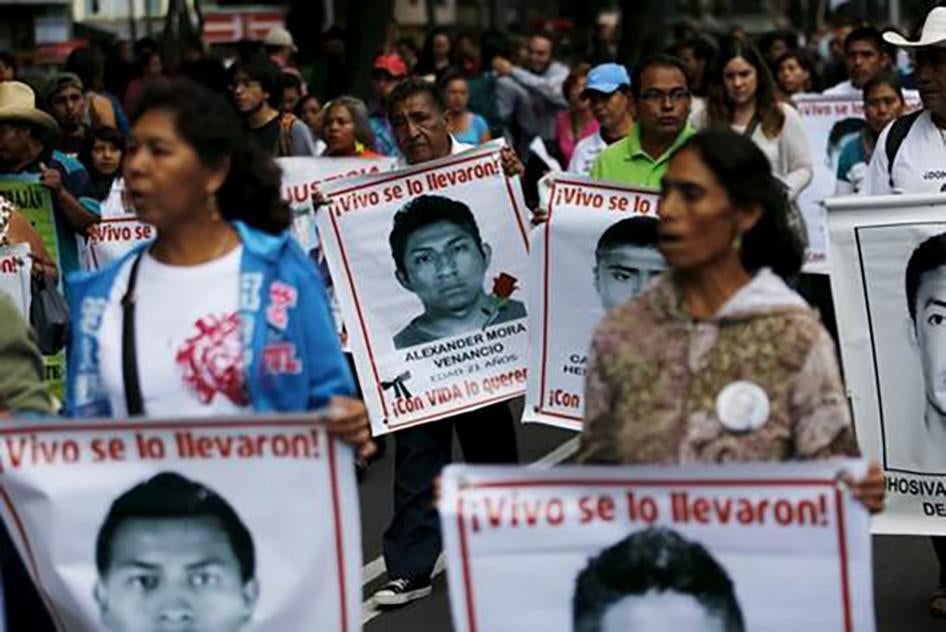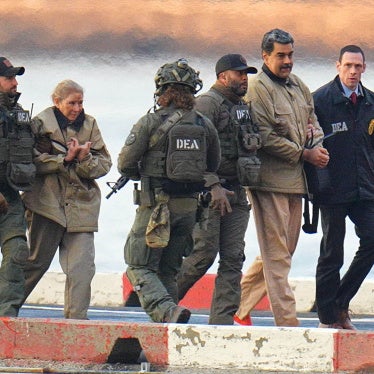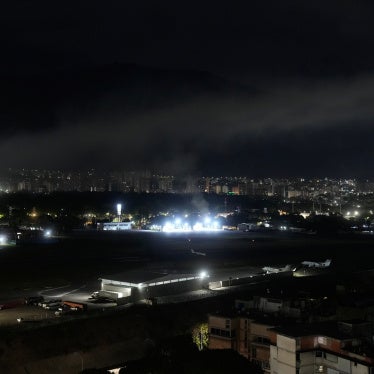(New York) – Mexico should immediately address the failures of its investigation into the enforced disappearance of 43 students in September 2014, and bring those responsible to justice, Human Rights Watch said today. The Attorney General’s Office should promptly investigate the claims of abuse and obstruction of justice made by an international group of experts that evaluated the government inquiry into the disappearances.
On September 6, 2015, an international expert group appointed by the Inter-American Commission of Human Rights (IAHCR) published a report refuting the official account of the fate of 43 students from a teacher’s college in Ayotzinapa, Guerrero state. This held that the 43 had been detained by municipal police and handed over to members of a criminal group, who killed them and burnt their bodies in a nearby municipal dump. According to the expert group, those conclusions hinge on allegedly coerced witness testimony that is contradicted by physical evidence.
“This report provides an utterly damning indictment of Mexico’s handling of the worst human rights atrocity in recent memory,” said José Miguel Vivanco, Americas director at Human Rights Watch. “Even with the world watching and with substantial resources at hand, the authorities proved unable or unwilling to conduct a serious investigation.”
Austrian forensic experts identified the remains of only one student, allegedly found near the dump. The whereabouts of the other 42 remain unknown.
The report challenges key aspects of the official findings presented by the Attorney General’s Office, which claimed it had solved the case in January 2015. According to the expert group, it is “impossible” that 43 bodies were cremated in the garbage dump, and there is “no evidence” to support that hypothesis.
The official investigation was marred by the mishandling, loss, and possible destruction of key evidence. State authorities failed to adequately secure and document different crime scenes, leaving crucial pieces of evidence, such as blood and hair, vulnerable to contamination and manipulation. In July 2015, more than nine months into the investigation, the group discovered that multiple articles of clothing belonging to the victims had been collected but never examined.
Federal prosecutors neglected to review security camera footage until requested by the expert group, at which point much of it had been erased. For example, a video recording of a confrontation between students and police was destroyed in the custody of state judicial authorities, the group said. Authorities also failed to search the homes and offices of key suspects in the municipal police. Two bus drivers who witnessed clashes between the students and police were not interviewed by prosecutors until April 2015.
The expert group concluded that multiple detainees suffered injuries caused by intentional abuse. A number of suspects told the experts that they were tortured by security agents.
Moreover, the report reveals that federal prosecutors only focused on four buses carrying students, and did not investigate the possible link between the disappearances and a fifth bus carrying students. Federal authorities told the group that the fifth bus had been destroyed by students prior to the clashes with security forces – a claim that, according to the international experts, was contradicted by multiple witnesses and the initial investigation by state-level authorities.
The omission had “serious consequences” for the investigation, as this bus is likely a “key element” in the case, the experts said.
The expert group’s findings are based on a six-month review of available evidence and the judicial file, independent crime scene examination, and interviews with suspects, federal authorities, surviving witnesses, and family members.
The report calls on Mexican authorities to redouble their efforts to bring those responsible for the enforced disappearances to justice, clarify the whereabouts of the disappeared students, and thoroughly investigate links between authorities and organized crime groups. Although the group’s mandate expired on September 2, 2015, the Mexican government is considering an extension.
The failure of authorities to resolve the Ayotzinapa case is all the more troubling given the unusually intense public scrutiny the case received, and the government’s repeated assurances that it was committed to resolving it, Human Rights Watch said.
Enforced disappearances by security forces are widespread in Mexico. Dozens of corpses and several mass graves were unearthed in Iguala during the course of the Ayotzinapa investigation. There are over 300 open investigations into alleged forced disappearances in the municipality of Iguala alone, according to the Attorney General’s Office. Nationally, more than 25,000 people are missing, according to an official national registry.
As of April 2014, no one had been convicted of an enforced disappearance committed after 2006, according to official statistics. In August 2015, a representative of the Attorney General’s Office told Human Rights Watch that they were engaged in efforts to update official information on enforced disappearances.
“Without this report, the full extent of the investigative failures would probably never have come to light, and the case of the 43 students would have remained closed,” Vivanco said. “The expert group’s mandate should now be extended so it can monitor new investigations into this and other human rights cases. The country’s justice institutions need external scrutiny to avoid a repetition of this shameful performance.”









